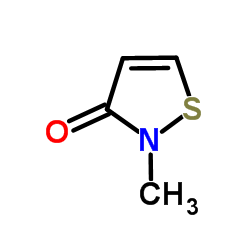Contact allergy to methylchoroisothiazolinone/methylisothiazolinone (MCI/MI): findings from a contact dermatitis unit.
Paula Maio, Rodrigo Carvalho, Cristina Amaro, Raquel Santos, Jorge Cardoso
文献索引:Cutan. Ocul. Toxicol. 31(2) , 151-3, (2012)
全文:HTML全文
摘要
Several preservatives are currently allowed in cosmetic products in the EU. However, only a few of them are strongly represented on the market: formaldehyde, parabens, formaldehyde releasers and methylchoroisothiazolinone/methylisothiazolinone (MCI/MI). MCI/MI has been widely used during recent years for the preservation of aqueous systems in cosmetics, toiletries and in several industrial applications.To describe the frequency of contact allergy to (MCI/MI) in a contact dermatitis unit.A retrospective study was conducted including all patients submitted to patch testing, from January 2007 to December 2009.In total, 629 consecutive patients with a clinical diagnosis of contact dermatitis were patch tested over a period of 3 years. The frequency of positive reaction to MCI/MI was 2.4% (15/629). Of the positive patients, 26.5% (4/15) gave a history of atopy. The dermatitis was generalized in 4 patients (26.5%), localized to the head and neck in 3 patients, and involved hands or feet in 9 patients. Other allergen sensitivities were found to occur simultaneously in the majority of cases: two patients (2/15) were allergic to fragrance mix 1 (FM1) and one (1/15) was allergic to fragrance mix 2 (FM2) as well as two (2/15) were allergic to chromium and three (3/15) were allergic to nickel. In 80% of the cases (12/15), the reaction was judged to be of current relevance for products used in personal hygiene.The frequency of positive reactions to MCI/MI reported in our study is in the middle range thus far reported in European series in the literature. MCI/MI is a very common biocide for use by the general public at the established allowed concentration, which has been subject of successive measures of regulation considering the compound's current nearly ubiquitous presence in cosmetics. Certain factors appear to increase the risk of sensitization, namely chronic dermatitis and the frequent use of leave-on products containing MCI/MI by these patients.
相关化合物
| 结构式 | 名称/CAS号 | 分子式 | 全部文献 |
|---|---|---|---|
 |
甲基异噻唑啉酮
CAS:2682-20-4 |
C4H5NOS | |
 |
2-甲基-4-异噻唑啉-3-酮盐酸盐
CAS:26172-54-3 |
C4H6ClNOS |
|
Methylisothiazolinone contact allergy and dose-response rela...
2011-06-01 [Contact Dermatitis 64(6) , 330-6, (2011)] |
|
Follow-up of the monitored levels of preservative sensitivit...
2012-11-01 [Contact Dermatitis 67(5) , 312-4, (2012)] |
|
Occupational contact dermatitis in painters: an analysis of ...
2012-11-01 [Contact Dermatitis 67(5) , 293-7, (2012)] |
|
Determination of preservatives in cosmetics, cleaning agents...
2014-01-01 [J. Chromatogr. Sci. 52(1) , 88-94, (2013)] |
|
Effects of 5-chloro-2-methyl-4-isothiazolin-3-one and other ...
2011-11-01 [Arch. Toxicol. 85(11) , 1419-27, (2011)] |